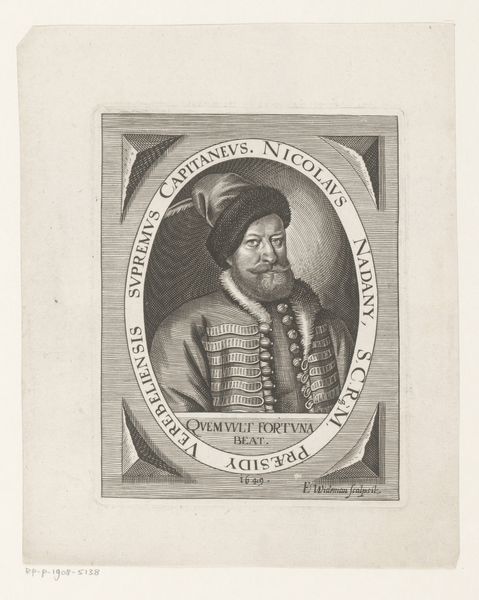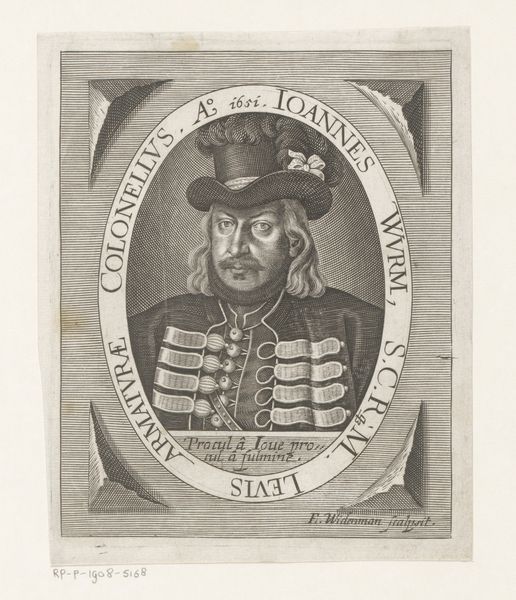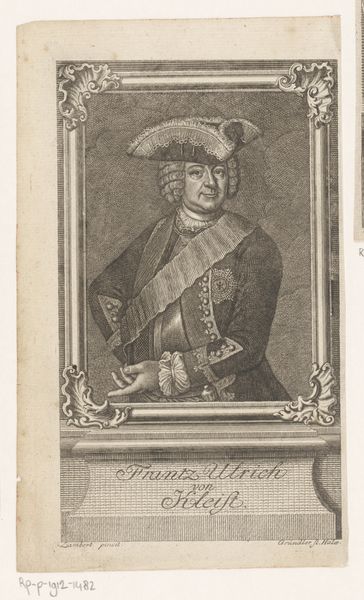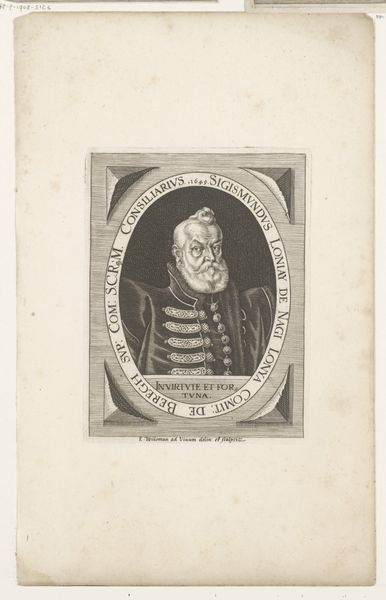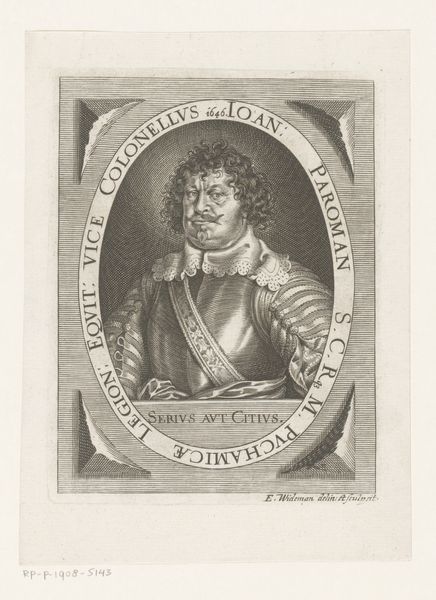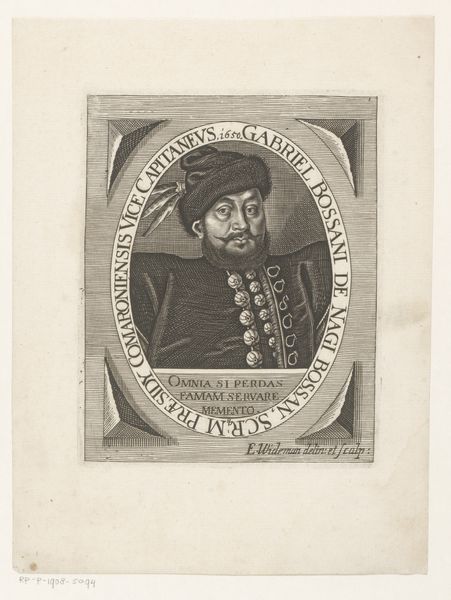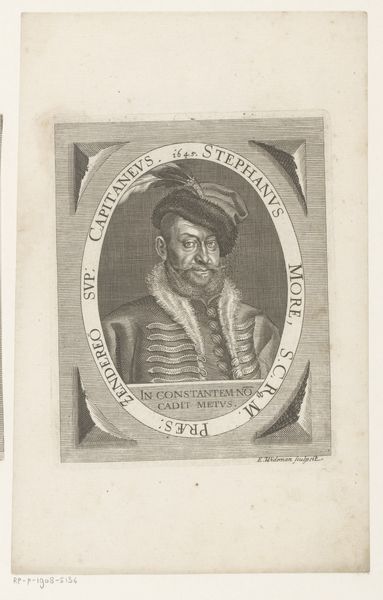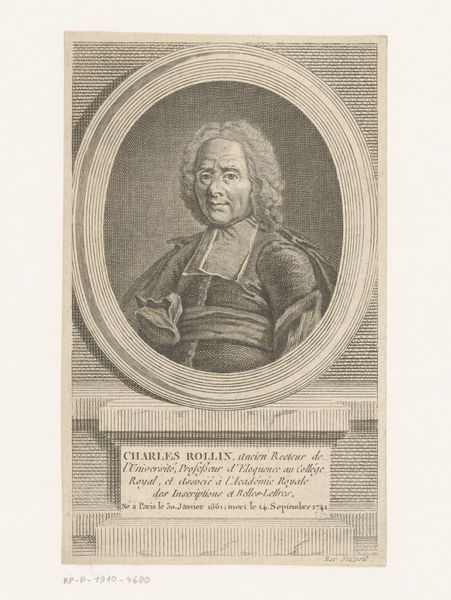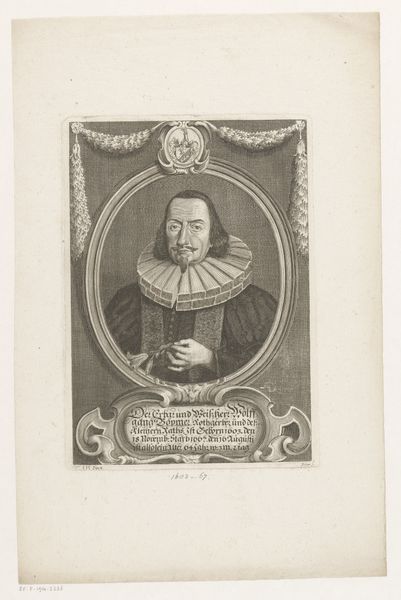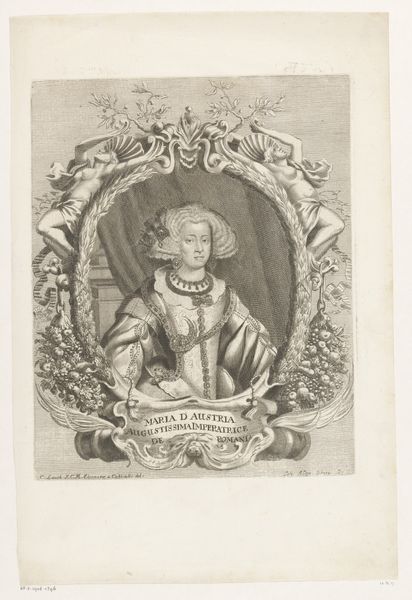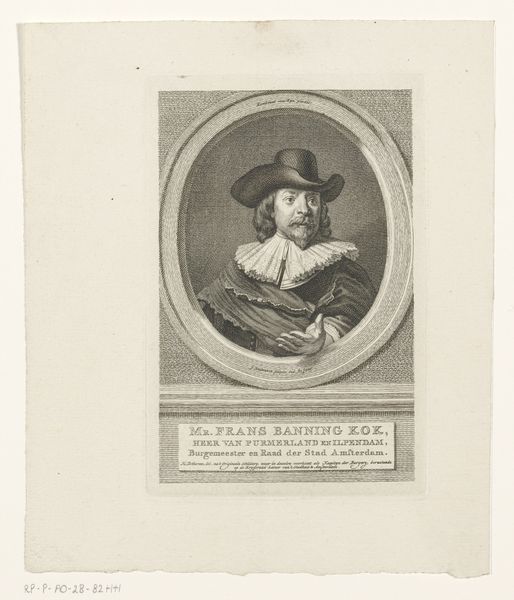
engraving
#
portrait
#
aged paper
#
toned paper
#
baroque
#
old engraving style
#
history-painting
#
engraving
Dimensions: height 151 mm, width 113 mm
Copyright: Rijks Museum: Open Domain
Curator: The somber countenance of Ivan Drasckovic jumps right out. There's something intensely resolute about the man depicted. It is rendered in stark, uncompromising lines of engraving, with a rigid stillness in the pose and overall framing of the composition. Editor: And quite an impressive mustache! But beyond that initial impression, what can you tell us about this historical figure and how the portrait functions within its time? Curator: This is an engraving from 1648, made by Elias Widemann, now residing in the Rijksmuseum's collection. Widemann chose engraving as the technique. In it, we see a likeness of Ivan Drasckovic, and Widemann captures this 17th-century personage within the formal conventions expected of the baroque style. The portrait presents him within a defined oval frame surrounded by descriptive text. Editor: The text seems so deliberately placed. Not just as identification but integrated directly into the symbolic meaning. What might that entail for contemporary viewers encountering the image? Curator: Precisely. The integration is a classic symbolic approach. Encircling the image, the inscribed Latin phrases don't simply name Drasckovic, they assert his titles and status, broadcasting the power of the individual portrayed and framing it within religious endorsement. This reflects the deep entanglement of secular authority with divine right. The very act of representing him this way serves as an emblem of his legitimacy. His garments act as extensions of this power. The intricate details are indicators of rank and emphasize cultural continuity. Editor: Do you think it successfully achieves its purpose? To me, it reads more as a study in controlled tension. There's formality, yes, but I sense underlying turmoil beneath that stern facade. That period was fraught with social and political upheavals, so it's intriguing to consider how those anxieties might be visually coded, intentionally or otherwise, within this seemingly straightforward depiction of nobility. Curator: A plausible argument. By acknowledging those historical tensions that exist alongside this confident public image we unveil fascinating layers of perception and manipulation present within historical representation itself. Editor: Absolutely. Looking beyond the surface reveals the intricate game of constructing and solidifying power and presence in a visually compelling, historically situated package. Thank you for bringing that into focus.
Comments
No comments
Be the first to comment and join the conversation on the ultimate creative platform.
